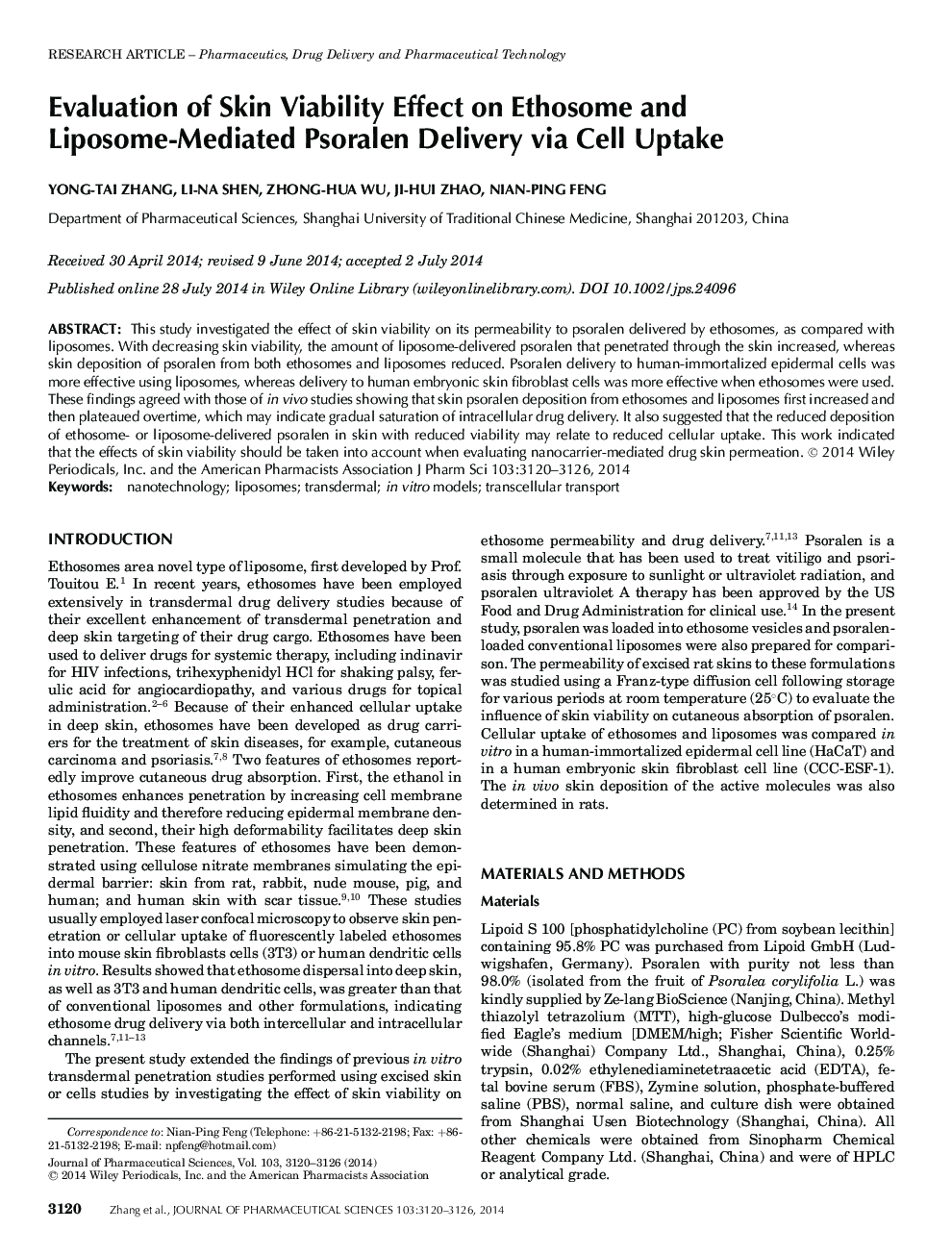| Article ID | Journal | Published Year | Pages | File Type |
|---|---|---|---|---|
| 2484663 | Journal of Pharmaceutical Sciences | 2014 | 7 Pages |
Abstract
This study investigated the effect of skin viability on its permeability to psoralen delivered by ethosomes, as compared with liposomes. With decreasing skin viability, the amount of liposome-delivered psoralen that penetrated through the skin increased, whereas skin deposition of psoralen from both ethosomes and liposomes reduced. Psoralen delivery to human-immortalized epidermal cells was more effective using liposomes, whereas delivery to human embryonic skin fibroblast cells was more effective when ethosomes were used. These findings agreed with those of in vivo studies showing that skin psoralen deposition from ethosomes and liposomes first increased and then plateaued overtime, which may indicate gradual saturation of intracellular drug delivery. It also suggested that the reduced deposition of ethosome- or liposome-delivered psoralen in skin with reduced viability may relate to reduced cellular uptake. This work indicated that the effects of skin viability should be taken into account when evaluating nanocarrier-mediated drug skin permeation. © 2014 Wiley Periodicals, Inc. and the American Pharmacists Association J Pharm Sci 103:3120-3126, 2014
Related Topics
Health Sciences
Pharmacology, Toxicology and Pharmaceutical Science
Drug Discovery
Authors
Yong-Tai Zhang, Li-Na Shen, Zhong-Hua Wu, Ji-Hui Zhao, Nian-Ping Feng,
